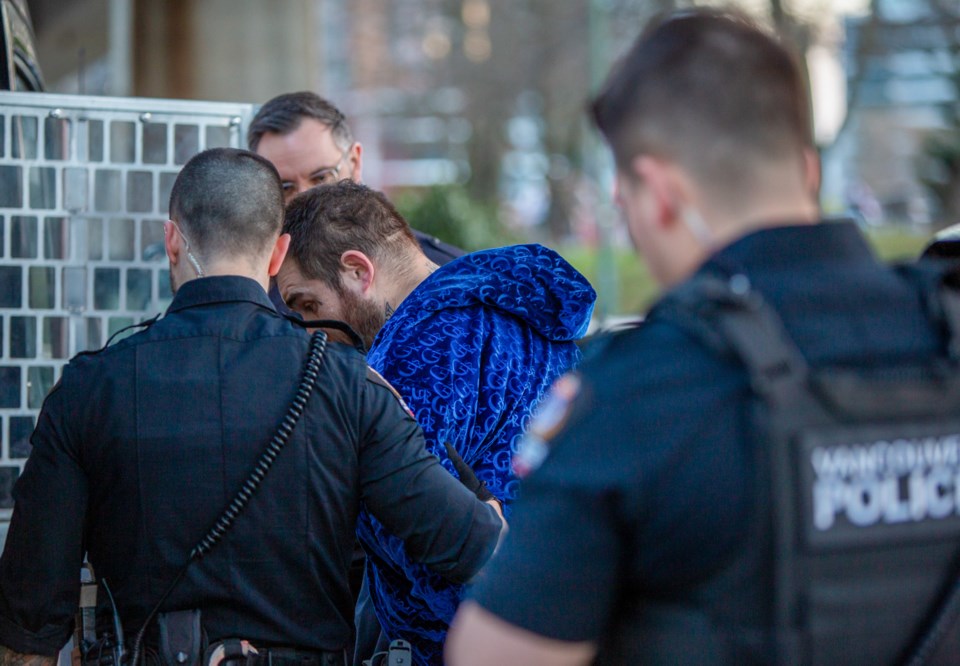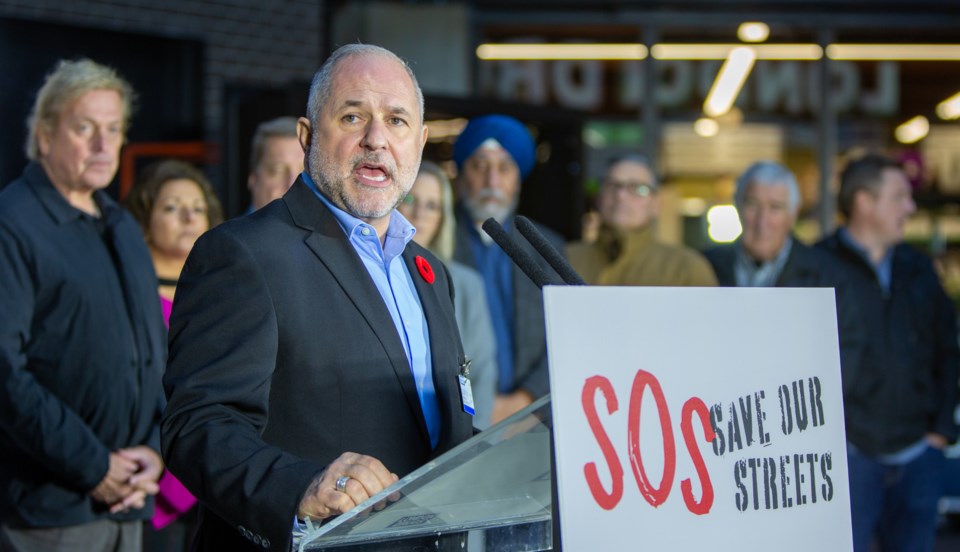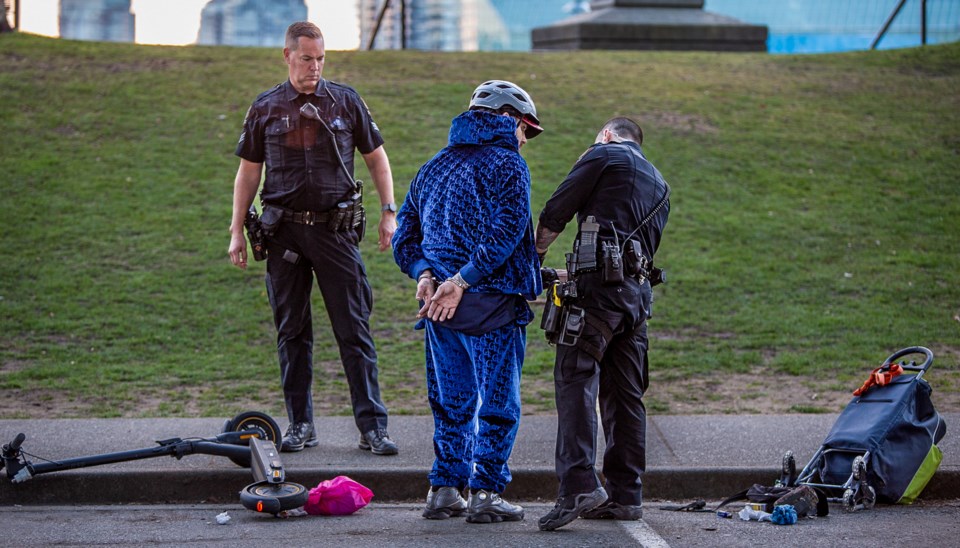Crime in Vancouver continued to fall in 2024, with break-and-enters to homes, businesses and cars all seeing significant decreases when compared to data collected by police in 2023.
Year-end statistics posted to the Vancouver Police Department’s website shows what has been a continuing trend since the pandemic was declared in 2020 — that crime in several major categories continues to drop.
In 2024, police recorded 2,233 break-and-enters to businesses, homes and places classified as “other,” which would include a backyard shed. Though break-ins did not dip below the 2,000 mark, police saw 752 fewer reports in 2024 than in 2023.
Businesses saw the biggest decrease, with break-ins dropping from 1,844 to 1,295.
That translates to a 30-per-cent drop, which was the second most significant reduction of the 19 crime categories listed by police in the data. Only arsons, which decreased from 345 in 2023 to 235 last year, saw a bigger percentage drop.
— classified as "theft from auto" — to vehicles dropped from 7,185 in 2023 to 5,741 last year.
Violent crime, for the most part, saw decreases across all categories, although that statement is based on an average taken from data collected from the city’s four policing districts.
So while assaults saw an overall eight-per-cent drop, robberies were up 22.7 per cent in the district that includes the Downtown Eastside and neighbourhoods that stretch to the Pacific National Exhibition grounds.
Sexual offences were up 19.4 per cent in the district that includes parts of downtown, the Granville entertainment strip and the West End. Police have stated this category can include offences that occurred in previous years, but only reported in 2024.
Seizures of “offensive weapons” such as guns, knives, hatchets and bear spray also increased, with 849 last year over 740, for a 15-per-cent spike.
For context, city-wide data from 2019 shows assaults totalled 4,523, break-and-enters 4,695, robberies 626. That same year, 1,392 stolen cars were reported and break-ins to vehicles reached 16,488.

'Unfriendly place for gang members'
Sgt. Steve Addison, a VPD media relations officer, said the addition of 100 new officers to boost the department’s ranks to 1,448 was “from our perspective, the biggest factor in the positive crime trend.”
“The new officers, who are all working in our patrol division, have allowed us to respond quicker to crimes-in-progress to secure evidence and catch offenders before they flee,” Addison said Monday in an email.
“The extra staffing has also allowed us to deploy city-wide quick-response teams — we call them Metro Teams — and better address neighbourhood issues when the occur.”
Addison said a good example would be the series of investigations called Project Barcode, where police partnered with 170 retailers throughout the city to target violent and chronic thieves. The projects resulted in more than 1,400 arrests and recovery of more than $450,000 in stolen merchandise.
“We’ve also continued working to make Vancouver an unfriendly place for gang members, and we’ve seen a reprieve in violent gang activity in the city,” he said.
“We’re continuing to target producers and traffickers of harmful opioids, which often contributes to street violence, and officers from our investigations division have successfully investigated a number of serial offenders responsible for random violence.”
'Is crime really down?'
At the same time, the police data — and the comments from police officers — can be interpreted in different ways, depending on a citizen’s experience and where a person lives in Vancouver.
A reader contacted BIV last fall after quoting VPD Chief Const. Adam Palmer saying that total crime was down 7.9 per cent “across the board in all crime categories.”
“Is crime really down if the police don't process your complaint and businesses get tired to the point where they just stop reporting it?” said reader Kevin W in an email. “My family's store lost $25,000 in merch in the last two months, but thanks for perpetuating this narrative.”
BIV made efforts to contact the reader to learn more about his concerns, but received no response.

Save Our Streets
His frustration was at the same level BIV heard at the launch in October 2023 of a public safety coalition created to pressure governments to take action on what its members say is a growing crime and violence crisis in the province.
The Save Our Streets (SOS) coalition kicked off its campaign in the atrium of the Woodward’s building in Vancouver, where London Drugs’ president and CEO Clint Mahlman demanded government and justice administration officials “step up and do their jobs to make our streets safer.”
“The escalating violence, vandalism and theft on our streets and in communities throughout British Columbia is at a crisis point,” said Mahlman, the founding chairperson of the coalition.
“Every British Columbian knows that the escalation in crime and violence in our communities has reached epidemic proportions. And it's been building for a very long time.”
Mahlman didn’t provide crime data for B.C. cities but told reporters after the news conference that London Drugs lost more than $10 million from thefts in 2022 at its 80 stores in B.C., Alberta, Saskatchewan and Manitoba.
That figure did not account for vandalism or staff becoming victims of violence.
Public safety forum Jan. 23
The coalition is hosting what it has called a “communities driving change forum” Jan. 23 at the Morris J. Wosk Centre for Dialogue in Vancouver. Terry Yung, Minister of State for Community Safety and Integrated Services, will be present and speak on behalf of the provincial government.
Yung is a recently retired VPD officer.
Addison acknowledged there are still very serious public safety challenges in the city. Among those challenges, he said, is chronic and violent retail theft, which often goes under-reported, but is having a significant impact on business owners, staff and shoppers.
“This problem is largely fueled by drug addiction and the illicit market for stolen goods,” he said.
Abandoned calls
The Vancouver police data is based on reports, with the number of to the VPD’s non-emergency phone line not accounted for in the statistics. The data also doesn’t include, for example, a vehicle owner who couldn’t be bothered to report a break-in.
Abandoned calls to the VPD has been a regular topic of discussion at police board meetings, with Palmer and some of his deputy chiefs repeatedly saying how the E-Comm dispatch service — which operates the line — has to do better.
The number of abandoned calls recorded for the first nine months of the year in 2024 totalled 18,305, compared to 40,485 in 2023. E-Comm continues to use new technology to improve the service.
“However, previous negative experiences by members of the public may dissuade them from calling again even if caller wait times improve,” said a report that went before the police board in November 2024.
In a previous presentation to the police board, Simon Demers, the VPD’s director of planning, research and audit section, said an analysis of 88,000 abandoned calls in 2021 suggested there would have been an additional 1,700 reports of break-ins to homes and businesses.
Added to those crime reports would have been 1,000 thefts, 600 assaults, 500 calls related to mischief and 200 for fraud, Demers said at the time.
X/@Howellings

